Indoor gardening has become a beacon for those seeking to enhance their home environment with the freshness of home-grown produce, regardless of the weather outside. This surge in popularity can be attributed to the aesthetic appeal of having a green, vibrant space and the practical benefits of access to fresh vegetables year-round. For those interested in starting their indoor vegetable garden, certain vegetables stand out for their ease of cultivation, minimal space requirements, and quick growth cycles. From leafy greens to crunchy radishes, the upcoming sections will detail some of the easiest vegetables to cultivate right in the comfort of one’s home.
Lettuce
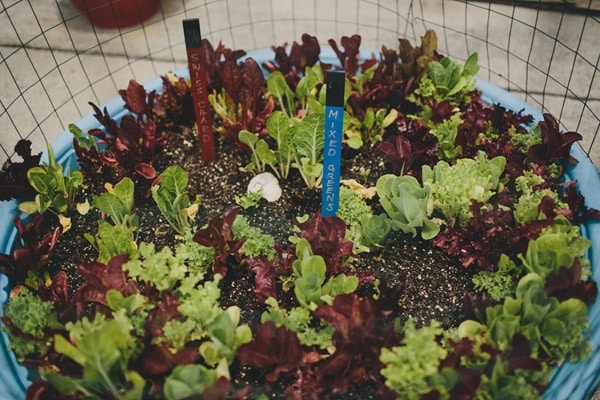
Lettuce is a prime candidate for indoor vegetable gardening due to its adaptability and low-light requirements. Most lettuce varieties grow quickly and do not require the full sun, making them perfect for spaces with limited natural light. Beginners will find that lettuce can be harvested multiple times per season by cutting the leaves at the base and allowing them to regrow. This method ensures a continual supply of fresh greens from a single planting. Additionally, lettuce is resistant to most pests when grown indoors, simplifying maintenance and care.
Furthermore, growing lettuce indoors allows for control over the growing environment, reducing the risk of chemical exposure and pests commonly found outdoors. Gardeners can use organic soil and natural fertilizers to enhance the health benefits of their harvest. Regular watering and occasional feeding will keep lettuce leaves tender and flavorful, making them a perfect addition to salads, sandwiches, and numerous other dishes.
Spinach
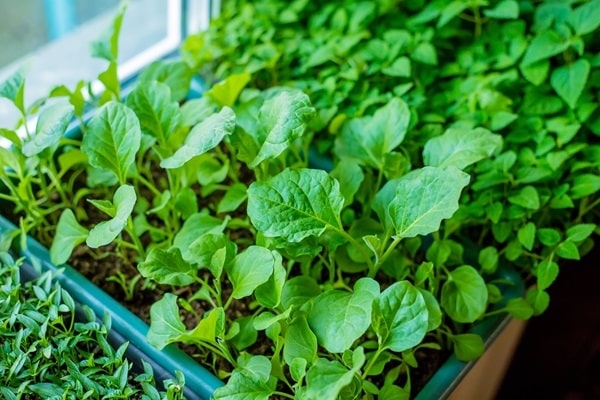
Spinach is another leafy green that excels in an indoor garden setting. Its rapid growth cycle and high nutrient content make it an excellent choice for health-conscious gardeners. Spinach plants are compact and can be grown in small spaces, including windowsills and kitchen counters. They prefer cool temperatures, which makes them ideal for growing indoors during any season. Spinach can produce a substantial yield within just a few weeks by ensuring a consistent light source.
The care for indoor spinach involves keeping the soil moist but not soggy and using a high-nitrogen fertilizer to promote lush leaf production. Spinach is also versatile in the kitchen, used in everything from fresh salads to smoothies to cooked dishes. Its ability to regrow after harvesting makes it a sustainable option, providing multiple harvests from a single batch of seeds. This characteristic makes it cost-effective and continuously rewarding for indoor gardeners.
Radishes
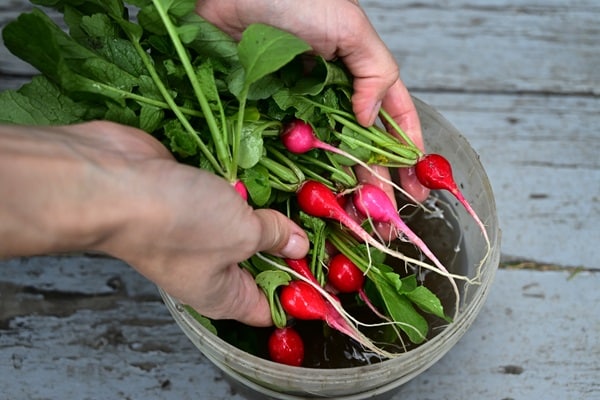
Radishes are perfect for the indoor gardener who wants to see quick results. These root vegetables can go from seed to harvest in as little as four weeks, making them one of the fastest-growing vegetables you can choose. They require more depth to grow than leafy greens, but small 6-8 inches-deep containers usually suffice. Radishes do not need large amounts of sunlight, so they adapt well to less sunny spots in a home.
When growing radishes indoors, it is crucial to maintain even moisture in the soil and provide adequate spacing between plants. This ensures that the radishes can develop their trademark round shape. Regular harvesting is recommended when radishes mature, preventing them from becoming woody and overly piquant. Their peppery flavor makes them a great addition to salads, and they are also delicious when cooked.
Herbs (Basil, Parsley)

Herbs like basil and parsley are staples in any indoor garden due to their usefulness in the kitchen and relatively easy care requirements. Basil thrives in warm environments with plenty of sunlight, making it a perfect herb to grow on sunny windowsills. Its leaves can be harvested continually throughout the year to provide a fresh supply for culinary uses. Basil also requires regular watering but forgives if the soil dries out occasionally.
On the other hand, Parsley prefers cooler temperatures and less direct sunlight than basil. It grows well in a home’s partial shade and cooler areas, making it a great complement to basil in an indoor herb garden. Parsley is also a biennial plant, meaning it can produce leaves for harvesting over two growing seasons, providing long-term benefits from a single planting. Both herbs add fresh flavors to dishes and bring a fragrant aroma and a touch of greenery to the indoor environment.
Green Onions
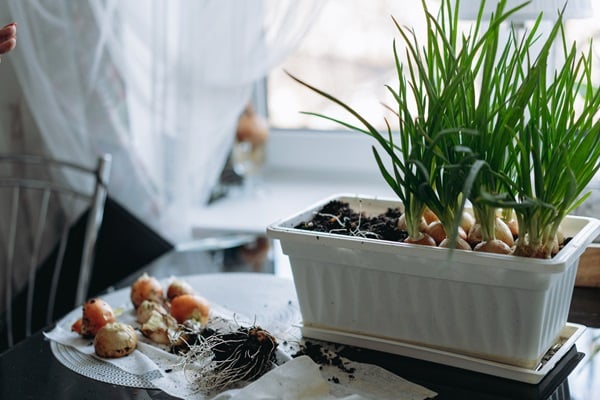
Green onions are ideal for indoor gardens because they require very little space and can be easily regrown from kitchen scraps. To grow green onions indoors, simply place the root ends in a glass of water in a well-lit area. Roots will grow rapidly, and shoots can be harvested when they reach a few inches tall. This method reduces waste and provides a continuous supply of fresh green onions.
Besides being incredibly easy to maintain, green onions can be transplanted into pots with soil to prolong their growing cycle. They thrive in various conditions, preferring a steady moisture supply and moderate sunlight. This adaptability makes them suitable for various locations within a home, from kitchen windowsills to balconies with filtered light. By regularly trimming the green shoots, gardeners can encourage the plants to become fuller and produce more over time. The quick turnaround from planting to harvest makes green onions a rewarding choice for those new to indoor gardening.
Bell Peppers
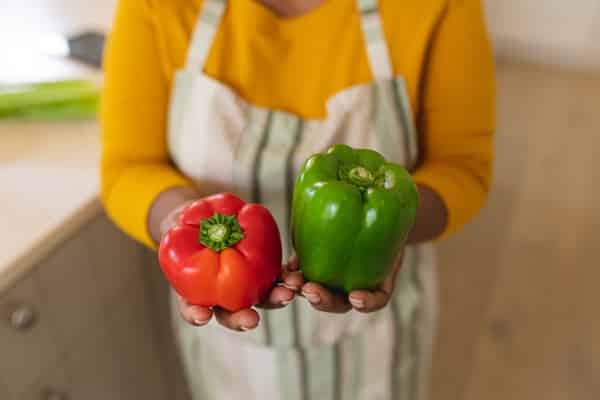
Bell peppers are a vibrant and flavorful addition to any indoor garden. While they require a bit more care and patience than leafy greens, the payoff is the production of fresh, sweet peppers that can be used in various dishes. Bell peppers thrive in warm conditions and need sunlight to develop their full color and flavor. This vegetable is ideal for an indoor setting with a south-facing window or supplemented with grow lights.
To successfully cultivate bell peppers indoors, it’s important to start with a deep pot that allows for the growth of strong roots. Regular watering and fertilization with a high-potassium formula will encourage fruit development. Maintaining the right temperature and humidity levels will also help prevent common issues such as blossom drop. With proper care, indoor bell peppers can produce a generous yield, adding nutritional value and aesthetic appeal to a home.
Carrots
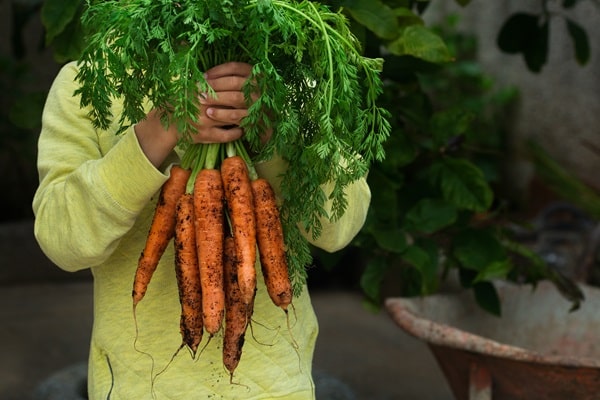
Carrots are an exciting choice for indoor vegetable gardens due to their underground growth, which brings a sense of surprise and anticipation to the harvesting process. Compared to other vegetables, carrots require deeper containers to accommodate their root growth. Loose, well-draining soil is essential to allow for the development of long, straight carrots. Indoor carrots benefit from steady light but can tolerate some shade, making them versatile for various indoor locations.
Watering is crucial in carrot care; the soil should be consistently moist to prevent the roots from becoming tough and woody. Thinning the seedlings early on is also important to avoid overcrowding and to ensure that each carrot has enough space to develop properly. The sweet, crunchy texture of freshly harvested carrots makes them a favorite among children and adults, enhancing any meal with their fresh, earthy flavor.
Final Thoughts
Indoor vegetable gardening offers a delightful blend of convenience, sustainability, and the pleasure of harvesting one’s produce. From the crispy freshness of lettuce and the rapid growth of radishes to the colorful allure of bell peppers and the delightful simplicity of microgreens, each vegetable discussed represents an opportunity to enhance one’s culinary and gardening experiences. As more individuals turn to indoor gardening, these easy-to-grow vegetables provide the perfect starting point for anyone looking to bring the joy of gardening into their home. Whether for the beginner gardener or the experienced green thumb, the rewards of indoor vegetable gardening are plentiful, offering fresh, healthy produce right at one’s fingertips.